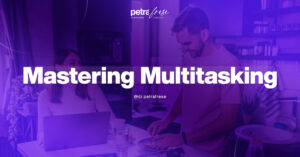
The Role of a Life Coach: Is It Really Worth It?
Ever felt like you’re running in circles, stuck in the same routine, and overwhelmed by the endless list of to-dos? It’s a scenario most of us are familiar with—those moments when you question your path, wonder if there’s a better way forward, or feel lost despite your best efforts. During such times, we often search for answers, seeking solutions to help us get unstuck and move forward. This is where a life coach comes in—a professional trained to guide you through the maze of personal and professional challenges, helping you gain clarity and reach your goals. In this blog, we’ll discuss what exactly a life coach does, how they make a difference, and whether having one is genuinely necessary. Whether you’re at a crossroads in your career, struggling with motivation, or aiming to achieve personal growth, understanding the role and value of a life coach could be the key to unlocking your potential. What Is a Life Coach? A life coach is a professional dedicated to helping individuals identify their goals, overcome obstacles, and create action plans for achieving personal and professional growth. Unlike therapists, who focus on healing past trauma and mental health issues, or mentors, who offer guidance based on their own experiences, life coaches, like Dr. Petra Frese, work with clients in a forward-focused manner. They don’t dwell on past events; instead, they concentrate on where you want to go and how to get there, acting as your partner in achieving your goals. Life coaching is not a one-size-fits-all approach. Different types of life coaches specialize in various areas of life, ensuring you receive targeted support tailored to your specific needs: The Role and Importance of a Life Coach in Our Lives Life can be complicated—whether it’s figuring out your next career move, finding balance in your daily routine, or feeling like you’re stuck. This is where a life coach steps in. Think of them as someone who provides the kind of guidance and support we all need when navigating life’s ups and downs. A life coach, like Dr. Petra Frese in Allentown, PA, works alongside you to help make sense of your goals and dreams, turning them into achievable plans. Here’s how they make a real impact: Providing Guidance and Support: A life coach helps you get clear on what you want and how to make it happen. For example, if you’re struggling to balance a demanding job and your personal life, a coach can offer practical strategies for setting boundaries and managing your time. This kind of personalized support is essential in helping you find fulfillment and direction. Identifying Strengths and Overcoming Obstacles: Sometimes, we don’t realize our own strengths or the things holding us back. A life coach works with you to pinpoint your talents and create a plan to navigate obstacles. Imagine feeling stuck in your career without knowing why; a coach might help you see that you’re not utilizing your full potential and support you in finding a path that fits your




